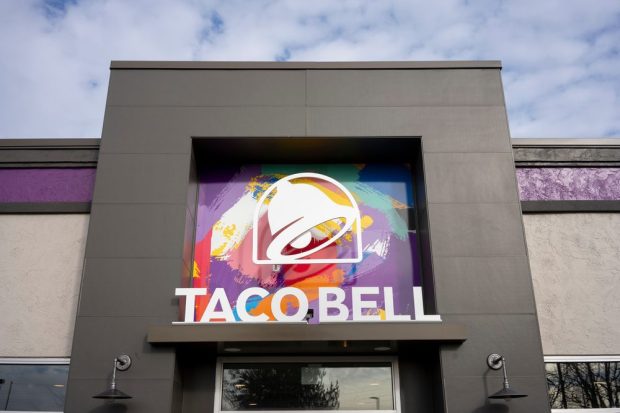Taco Bell’s Tech Investments Yield 60% Digital Sales Boost

As restaurant brands look to drive digital adoption, Taco Bell has seen a major boost from investing in its ordering channels.
Yum Brands, the parent company of Taco Bell, KFC, Pizza Hut and The Habit Burger Grill, shared on a call with analysts Wednesday (May 3) discussing the group’s first quarter 2023 financial results that the Mexican-inspired quick-service restaurant (QSR) brand has seen skyrocketing adoption of its eCommerce platforms.
“Taco Bell U.S. is leaning into his digital initiatives to drive customer engagement, with year-over-year digital sales up approximately 60%, leading to an eight-point improvement in its digital mix,” Yum Brands CEO David Gibbs told analysts on a call.
One of the ways that the brand has been driving digital adoption, Yum Brands CFO Chris Turner noted, is by utilizing “unique store designs” to improve the experience of ordering via the brand’s eCommerce platforms and of picking up food via the drive-thru. (One might remember the brand’s tech-powered two-story drive-thru or its kiosk-only location.)
Another is by offering delivery via direct channels, such that the brand can seize on consumers’ desire for food on demand rather than divert those sales to third parties.
“Taco Bell recently launched delivery as a service through its mobile app to create easier access for our customers to get our craveable products,” Gibbs said.
Overall, demand for delivery is on the rise. Research from PYMNTS’ study “Connected Dining: Rising Costs Push Consumers Toward Pickup,” which draws from a survey of more than 2,100 U.S. consumers in January, finds that 10% of consumers reported having ordered their last restaurant meal from delivery. This share was up significantly from 7% just the month before.
Meanwhile, KFC is seeing its conversational commerce efforts drive retention, with its Tictuk program enabling consumers to order their meal via chat, proving relatively sticky. Turner shared that the company’s “single largest market deployment” yet of its Tictuk chat-based ordering platform, acquired in 2021, shows that the feature has at least some staying power.
“Customers are now able to order KFC across 1,000 stores in South Africa using WhatsApp. Early results in the market show this new ordering channel is sticky, with more than 40% of users placing multiple orders in the first 90 days after launch,” Turner said.
Certainly, the ability to keep diners coming back is key to restaurants’ success, according to research from the December edition of PYMNTS’ Restaurant Digital Divide study, “The 2022 Restaurant Digital Divide: Turning First-Time Diners Into Loyal Customers,” which draws from a survey of more than 2,200 U.S. consumers.
The report noted that 34% of consumers try new restaurants each month. Yet returning customers are estimated to account for between 83% and 90% of all restaurant orders.
Plus, data from PYMNTS’ recent study “12 Months Of The ConnectedEconomy™: 33,000 Consumers On Digital’s Role In Their Everyday Lives,” which draws from responses from tens of thousands of U.S. consumers, notes that the share of consumers ordering via restaurants’ digital channels has remained at about 56% since late 2021.
